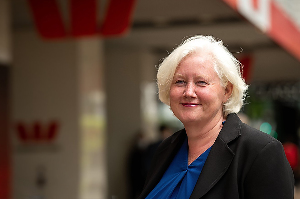
Derek Mayne, a former self-employed mortgage adviser and banker and now a compliance consultant and director of Rosewill Consulting, says advisers need to test clients on whether they can afford a mortgage and the repayments.
Mayne says using banks’ UMI calculators is not enough. “Using a UMI calculator just tells an adviser what the client can borrow, it doesn’t take into account the client’s lifestyle and if there will possibly be any changes to it.”
He says when mortgage advisers sign hand-over sheets for the bank to finalise a loan, they are confirming that a client can afford the loan.
Mayne had a situation last year when he was told by an adviser it was wrong to take into account affordability.
Shortly after the adviser came back to him and confirmed that he needed to change his approach. “The adviser had put the client’s loan through the chosen bank’s UMI calculator, it showed the client could afford it, but within three months the client came back and said he could not make the existing loan repayments.
“The adviser went to the bank and said his client was going to have to make changes. The bank immediately came back and said it was on the adviser because he had confirmed the client could afford the loan.”
Mayne says bank UMI calculators show what can possibly be borrowed. “Mortgage advisers really have to show how a client can afford the loan repayments.”
For example, he says, if a buyer is paying $500 a week in rent, saving $250 a week and wants a mortgage where the payments are $850 a week, they can probably afford it with good mitigants.
But an adviser with a client earning $80,000 a year, living at his/her parents’ home, with no savings, and a house deposit gifted from a family member and on average in overdraft $100 a week should not be putting in a mortgage application.
Mayne says many difficulties for advisers arise when clients want a house but don’t want to settle for second best. “They say they can afford it, a UMI calculator says they can, but realise after a while they can’t make the repayments and then want to make changes to the loan.”
He says what many mortgage holders forget is they still have to live and the difficulty recently has been rising interest rates, higher utility and food costs.
While there are only a small number of mortgagee sales, Mayne says, more are coming.
“More than ever mortgagee advisers need to cover themselves with good diary notes and by fully completing the records of advice and the process sitting behind the advice.
“When advisers are handing over sheets to finalise a bank loan, I believe they should give information on client conversations and discussions on affordability. They should, if possible, include a note confirming that the new loan repayments fit with the client’s budget and will not create financial hardship.”
Mayne says it is important advisers do this because if there are any subsequent problems with payments it shows the discussion has been had and the client has acknowledged this.
“By this time, the client will not remember conversations of months ago, but there will be written notes of advice given and the client’s understanding.”
Mayne says when he was working as a bank adviser assessing adviser loans, some of the files he reviewed were not up to standard. His work in risk and compliance has led to him helping some advisers with the quality of loan documents and records.



